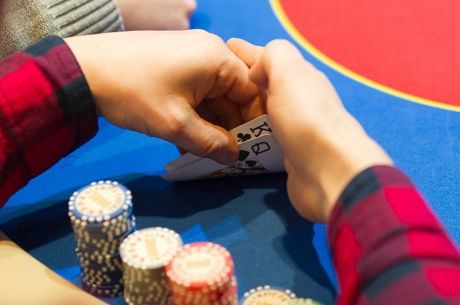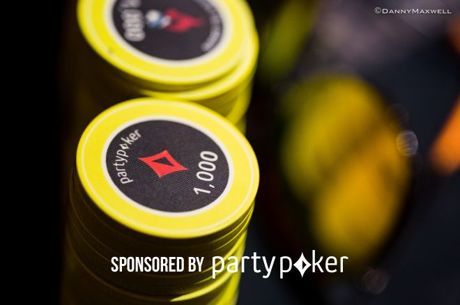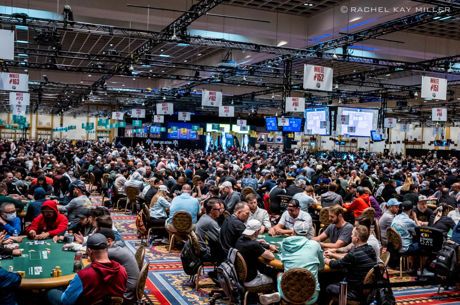Adding to Your Arsenal: Moving Beyond 'Fit or Fold'

You're not a beginner. You've passed that stage a while ago. You've become a disciplined, careful, thoughtful, tight and aggressive poker player.
You fold your bad starting hands, and you bet aggressively when you have a hand. You're patient enough to wait for the good starting hands, and you're generally disciplined enough to fold the good starting hands that have gone south and seem to have been outdrawn. You keep good records. And when you play in the loose home game where you started, you generally win.
But when you move up to the casino game, you are generally doing no better than breaking even, if that. You've figured out that you are beating the other players in those games, but you're not beating the rake that's just gone up to $5 plus another $2 for the promotions. You're wondering what you might do to move beyond the plateau where you seem to have settled. What's your next step?
Let me suggest that you've got to add some aggressive deception to your game. You can no longer be content with being the most disciplined player at the table. You've got to start looking for opportunities to steal pots from players with better hands, and without losing your head.
To do this you'll be playing more hands, and playing some of them differently from how you've grown to play them as the disciplined tight-aggressive player you've become. In so doing you'll accomplish two things fairly quickly. You'll steal more pots, and you'll get more action when you have very strong hands.
Simply speaking, you've got to move beyond the simple "fit or fold" strategy that you've learned.
Back when you were playing against opponents who were too loose, this was most certainly a "fitting" strategy (as it were). It helped focus you on only those hands that improved on the flop. But if you want to move up to the next level you'll have to get a bit more creative.
Say you're in a $1/$2 no-limit hold'em cash game, $300 effective stacks. An early position player raises to $10, the standard amount in this game of smart but fairly straightforward players. A player calls and the action gets to you in the cutoff seat. You have A?K? and call. It folds to the big blind who also calls, and the four of you see the flop.
The flop is Q?7?2? and the big blind checks. The preflop raiser bets $25 and the next player to act calls. Action is on you.
In the old days this was a fairly easy fold. Yes, you have two overcards. But your six outs were hardly worth a call in those "fit or fold" days. You didn't fit, so you'd fold. But I'm going to suggest two other possibilities.
The first is to raise in this situation �� a little more than a min-raise, let's say to $60.
You are raising to represent that you hit a very strong hand, something better than top pair, top kicker. You are also raising with the knowledge that you have ways to win the pot even if your opponents don't fold. You are raising because it is unusual in this relatively low stakes NL game for people to show a lot of aggression without strong hands.
If you win the pot right there, great. But also likely is that you'll get a call from the initial bettor, and maybe from the player in between as well. They may figure that since they're in for $25, they'll string along for another $35. Your intention is to continue with this strategy on the turn as well, assuming there is no prior action and it folds to you. You'd make another bet between 50-75 percent of the pot.
Expect to take down the pot. But if you get a call, you have six outs at drawing what is likely the winning card on the river. Also to keep in mind is that if you get raised, or if someone bets rather than checks the turn, you'll fold if you haven't improved.
Another way to play the same hand is to call on the flop, again going against your previously held "fit or fold" approach. Here you are calling with the intention of raising on the turn.
Let's say with a flop of Q?7?2? and three of you in for another $25 each, the turn brings the 6? and a $50 bet from the original raiser that gets called by the next player to act. Raise to $150 and expect to take down the pot right there. If you don't, you again have six outs on the river that might win you the hand.
The thinking is that the preflop raiser who bet both the flop and the turn probably has top pair or an overpair, the third opponent has no better, and both will be intimidated into folding when you raise with your image of a tight player. If your raise succeeds in winning the pot half the time or more, this move will show a profit.
There are many more examples of moving beyond "fit or fold" poker. The underlining principle is to expand the hands you're willing to play by recognizing the value in extra aggression in the right spot.
Ashley Adams has been playing poker for 50 years and writing about it since 2000. He is the author of hundreds of articles and two books, Winning 7-Card Stud (Kensington 2003) and Winning No-Limit Hold'em (Lighthouse 2012). He is also the host of poker radio show House of Cards. See www.houseofcardsradio.com for broadcast times, stations, and podcasts.









